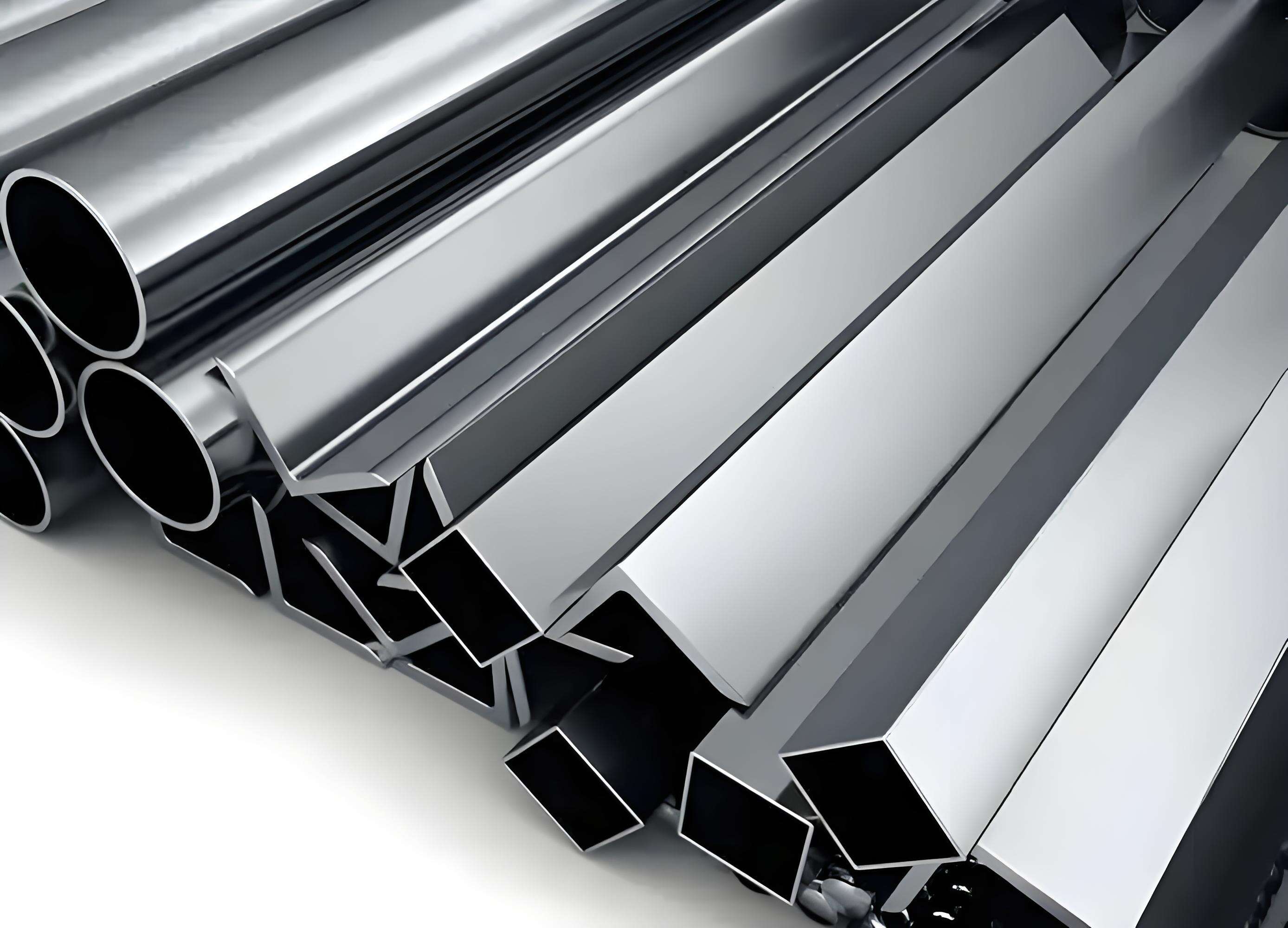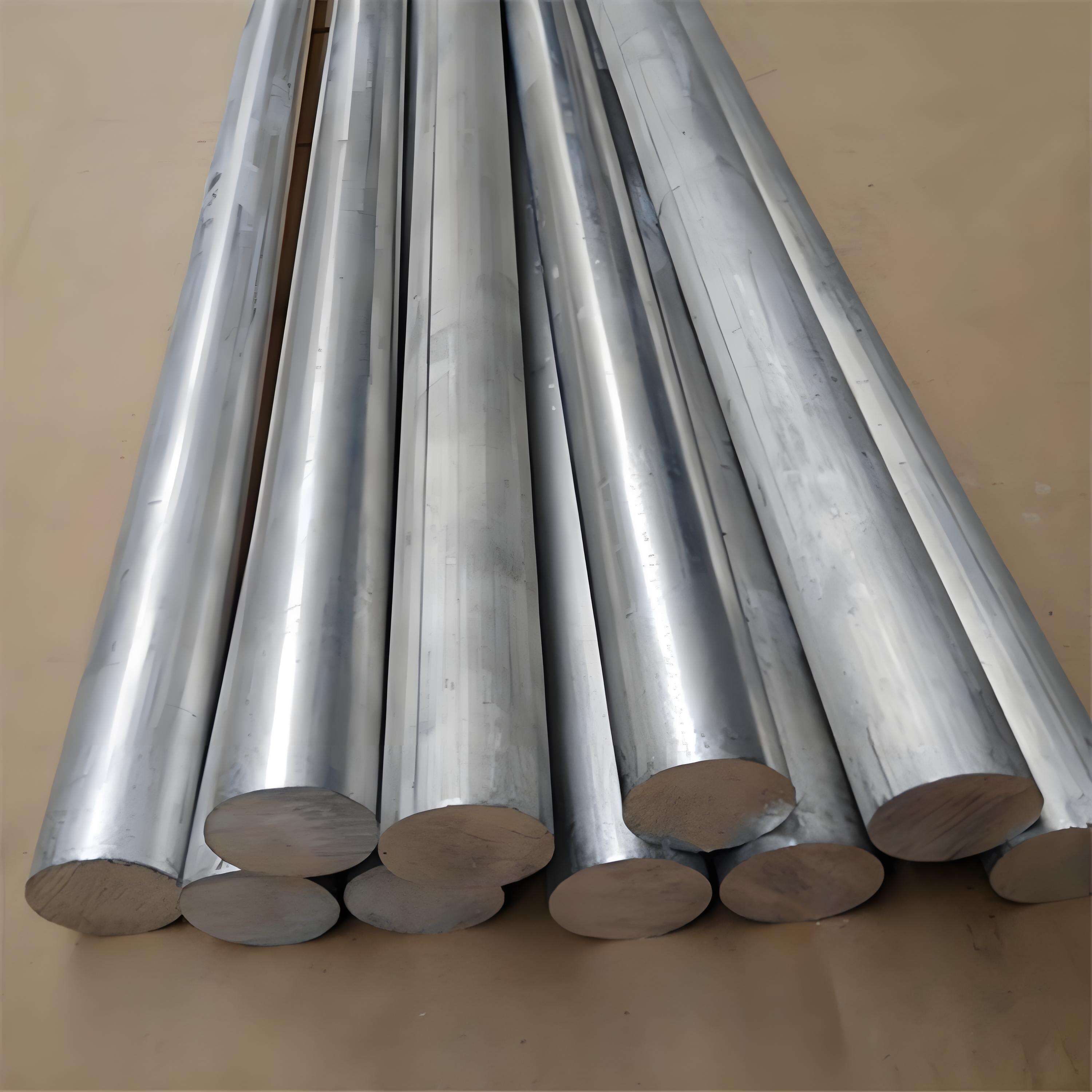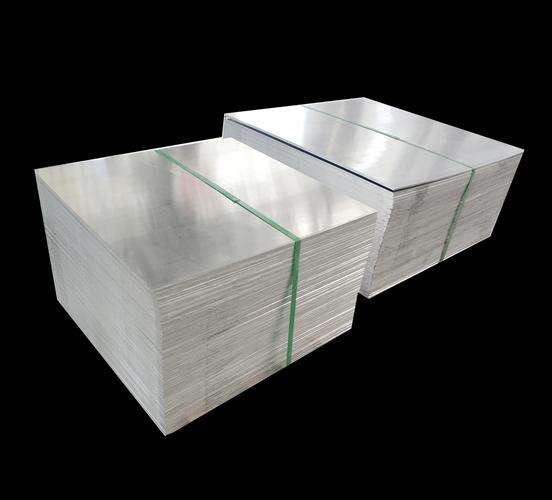อลูมิเนียมมีแม่เหล็กหรือไม่? ประเด็นสำคัญพร้อมข้อมูลและตัวอย่างประกอบ

อลูมิเนียมมีแม่เหล็กหรือไม่?
หากคุณเคยสงสัยว่า "อลูมิเนียมมีแม่เหล็กหรือไม่?" หรือเคยถามตัวเองว่า "แม่เหล็กติดกับอลูมิเนียมได้หรือไม่?" คุณไม่ได้สงสัยเพียงลำพังคำถามนี้มักเกิดขึ้นทั้งในห้องเรียน ห้องปฏิบัติการ และการประชุมทางวิศวกรรม มาเข้าเรื่องกันเลย: อลูมิเนียมไม่มีแม่เหล็ก ในแบบที่คนส่วนใหญ่เข้าใจ โดยแท้จริงแล้ว หากคุณลองนำแม่เหล็กตู้เย็นมาวางไว้บนพื้นอลูมิเนียมที่สะอาด จะไม่มีปฏิกิริยาใดๆ เกิดขึ้น แต่ทำไมอลูมิเนียมจึงไม่มีแม่เหล็ก และเหตุผลที่เป็นพื้นฐานคืออะไร?
อลูมิเนียมมีแม่เหล็กหรือไม่: คำตอบแบบกระชับ
อลูมิเนียมเป็นโลหะแม่เหล็กหรือไม่? คำตอบคือ ไม่ - อย่างน้อยก็ไม่เหมือนเหล็กหรือเหล็กกล้า อลูมิเนียมถูกจัดประเภททางเทคนิคว่าเป็น แม่เหล็กแบบพาราแมกเนติก . นั่นหมายความว่ามันมีแรงดูดที่อ่อนมากจนแทบสังเกตไม่เห็นเมื่อเทียบกับแม่เหล็ก จนถือว่าเป็นวัสดุที่ไม่มีคุณสมบัติแม่เหล็กในทางปฏิบัติทั่วไป ดังนั้น หากคุณกำลังหาคำตอบว่า "อลูมิเนียมมีคุณสมบัติแม่เหล็กหรือไม่" คำตอบคือ ไม่ อลูมิเนียมไม่มีคุณสมบัติแม่เหล็กในทางใดเลยที่สำคัญต่อชีวิตประจำวันหรือบริบททางวิศวกรรมส่วนใหญ่
เหตุผลที่แม่เหล็กมักไม่ติดกับอลูมิเนียม
เมื่อคุณพยายามนำแม่เหล็กไปวางติดกับอลูมิเนียมแล้วมันไม่ติดกัน นั่นไม่ใช่เรื่องบังเอิญ โครงสร้างอะตอมของอลูมิเนียมทำให้มีอิเล็กตรอนที่ไม่จับคู่กัน แต่อิเล็กตรอนเหล่านี้จะจัดแนวเข้ากับสนามแม่เหล็กเพียงแค่ในลักษณะอ่อนและชั่วคราวเท่านั้น เมื่อสนามแม่เหล็กลดลง คุณสมบัติแม่เหล็กก็หายไปทันที นี่จึงเป็นเหตุผลว่าทำไมในทางปฏิบัติ อลูมิเนียมจึงถือว่าไม่มีคุณสมบัติแม่เหล็ก และแม่เหล็กจึงไม่ติดกับมัน หากคุณเคยเห็นแม่เหล็ก "ติด" กับวัตถุที่ดูเหมือนอลูมิเนียม ความเป็นไปได้คือมันอาจมีหมุดยึดเหล็กกล้าซ่อนอยู่ มีสิ่งปนเปื้อนบนพื้นผิว หรือมีชิ้นส่วนที่มีคุณสมบัติแม่เหล็กอื่นแฝงอยู่
การอธิบายอย่างง่ายระหว่างพาราแมกเนติก (Paramagnetic) กับเฟอโรแมกเนติก (Ferromagnetic)
ฟังดูซับซ้อนใช่ไหม? นี่คือคำอธิบายอย่างย่อเกี่ยวกับประเภทหลักของพฤติกรรมแม่เหล็กในโลหะ 3 ประเภท:
- เฟอโรแมกเนติก (Ferromagnetic): ถูกแม่เหล็กดูดได้ดี และสามารถกลายเป็นแม่เหล็กถาวรได้ (เช่น เหล็ก โลหะเหล็กกล้า นิกเกิล)
- พาราแมกเนติก (Paramagnetic): มีแรงดึงดูดต่อสนามแม่เหล็กเพียงเล็กน้อยและเป็นการชั่วคราว โดยทั่วไปจะไม่รู้สึกได้หากไม่ใช้เครื่องมือพิเศษ (เช่น อะลูมิเนียม ไทเทเนียม)
- ไดแมกเนติก (Diamagnetic): มีแนวโน้มถูกสนามแม่เหล็กผลักออกเล็กน้อย โดยทั่วไปผลจะอ่อนกว่าพาราแมกเนติก (เช่น ตะกั่ว บิสมัท ทองแดง)
แล้วอลูมิเนียมมีแม่เหล็กหรือไม่? ในความหมายที่คนส่วนใหญ่เข้าใจ คำตอบคือไม่ มันเป็นพาราแมกเนติก แต่แรงดึงดูดนั้นอ่อนมากจนคุณไม่มีทางรู้สึกได้เลย เว้นแต่คุณจะใช้อุปกรณ์ห้องทดลองที่ไวต่อแม่เหล็กสูง
แต่เดี๋ยวก่อน — แล้ววิดีโอไวรัลที่แม่เหล็กดูเหมือนจะ 'ลอย' หรือเคลื่อนที่ช้าลงเมื่อผ่านอะลูมิเนียมล่ะ? นั่นไม่ใช่แรงแม่เหล็กจริง ๆ แต่เป็นปรากฏการณ์ที่เรียกว่า กระแสน้ำวนเหนี่ยวนำ เกิดจากคุณสมบัติการนำไฟฟ้าสูงของอลูมิเนียม เราจะได้สำรวจปรากฏการณ์ที่น่าสนใจนี้ในหัวข้อถัดไป
ตลอดคู่มือนี้ คุณจะได้พบกับการทดสอบจริง คำแนะนำในการแก้ปัญหา และข้อมูลเชิงลึกที่เป็นประโยชน์สำหรับวิศวกรและผู้ซื้อ หัวข้อในตอนหลังจะอ้างอิงข้อมูลคุณสมบัตุที่ละเอียดจากแหล่งที่เชื่อถือได้ เช่น ASM Handbook และ NIST เพื่อให้คุณสามารถตัดสินใจในการเลือกวัสดุได้อย่างมั่นใจและรอบคอบ

แม่เหล็กโดยธรรมชาติ เทียบกับผลของกระแสไฟฟ้าวน
แม่เหล็กโดยธรรมชาติในอลูมิเนียม
เมื่อคุณได้ยินใครสักคนถามว่า "อลูมิเนียมเป็นวัสดุแม่เหล็กหรือไม่" มันดูเหมือนว่าคำตอบคือใช่หรือไม่ใช่ก็เท่านั้น แต่ความเป็นจริงทางวิทยาศาสตร์นั้นมีความละเอียดอ่อนมากกว่านั้น อลูมิเนียมจัดเป็นวัสดุแม่เหล็กได้ตามหลักทฤษฎี แม่เหล็กแบบพาราแมกเนติก , ซึ่งหมายความว่ามันมีการตอบสนองต่อสนามแม่เหล็กเพียงเล็กน้อยและชั่วคราว ดังนั้น ทำไมอลูมิเนียมจึงไม่มีคุณสมบัติแม่เหล็กเหมือนกับเหล็กหรือสังกะสี คำตอบอยู่ที่โครงสร้างอะตอมของมัน อิเล็กตรอนคู่ที่ไม่สมบูรณ์ของอลูมิเนียมจะจัดแนวตามสนามแม่เหล็กภายนอกเพียงเล็กน้อย แต่ผลลัพธ์นี้ก็จางมากจนแทบสังเกตไม่เห็นในชีวิตประจำวันและในงานวิศวกรรมส่วนใหญ่
เมื่อสนามแม่เหล็กภายนอกถูกลบออกไป อลูมิเนียมจะสูญเสียการจัดแนวอ่อนๆ นี้ทันที ปรากฏการณ์ชั่วคราวนี้คือสิ่งที่ทำให้อลูมิเนียมเป็นวัสดุพาราแมกเนติก (Paramagnetic) แต่ไม่ใช่เฟอโรแมกเนติก (Ferromagnetic) สรุปคือ อลูมิเนียมเป็นพาราแมกเนติกหรือไม่ ใช่ แต่การตอบสนองทางแม่เหล็กของมันนั้นน้อยมาก จนในทางปฏิบัติส่วนใหญ่ อลูมิเนียมไม่มีคุณสมบัติแม่เหล็ก และจะไม่ดูดติดกับแม่เหล็กในลักษณะที่สามารถสังเกตได้
เหตุใดแม่เหล็กที่เคลื่อนที่จึงมีปฏิกิริยาต่างออกไปเมื่ออยู่ใกล้อลูมิเนียม
ตอนนี้คือจุดที่เริ่มท้าทายความเข้าใจ คุณเคยเห็นวิดีโอที่แม่เหล็กตกลงมาช้าๆ ผ่านท่ออลูมิเนียม ราวกับว่ามันถูกดันกลับขึ้นมาหรือไม่ คุณอาจสงสัยว่าเหตุการณ์นี้เป็นหลักฐานของอลูมิเนียมที่มีคุณสมบัติแม่เหล็กหรือเปล่า แต่จริงๆ แล้วปรากฏการณ์นี้ไม่ได้เกิดจากคุณสมบัติแม่เหล็กของอลูมิเนียม แต่เป็นปรากฏการณ์ที่เรียกว่า กระแสน้ำวนเหนี่ยวนำ กระแสไฟฟ้าเหล่านี้เกิดขึ้นโดยตรงจากคุณสมบัติการนำไฟฟ้าที่ยอดเยี่ยมของอลูมิเนียม ไม่ใช่คุณสมบัติแม่เหล็กโดยธรรมชาติของมัน
- แม่เหล็กเคลื่อนที่: แม่เหล็กรุนแรงถูกปล่อยให้ตกลงมาผ่านหรือผ่านชิ้นส่วนอลูมิเนียม
- กระแสเหนี่ยวนำ: สนามแม่เหล็กที่เปลี่ยนแปลงจะสร้างกระแสไฟฟ้าวน (eddy currents) ขึ้นภายในอลูมิเนียม
- สนามตรงข้าม: กระแส eddy ที่เกิดขึ้นจะสร้างสนามแม่เหล็กของตัวเอง ซึ่งจะต่อต้านการเคลื่อนที่ของแม่เหล็กที่ตกลงมา (หลักการของเลนซ์)
- แรงต้าน: ผลลัพธ์ที่ได้คือการเคลื่อนที่ของแม่เหล็กช้าลงอย่างเห็นได้ชัด หรือมี "แรงต้าน" ขณะที่มันตกลงมา แม้ว่าอลูมิเนียมเองจะไม่มีคุณสมบัติแม่เหล็กก็ตาม
ปรากฏการณ์นี้เป็นแบบไดนามิก—มันจะเกิดขึ้นก็ต่อเมื่อมีการเคลื่อนที่ระหว่างแม่เหล็กกับอลูมิเนียมเท่านั้น หากคุณถือแม่เหล็กให้นิ่งไว้บนอลูมิเนียม ก็จะไม่มีอะไรเกิดขึ้นเลย นั่นจึงเป็นเหตุผลว่าทำไมในระหว่างการทดสอบแบบนิ่ง (static tests) อลูมิเนียมจึงไม่มีคุณสมบัติเหมือนวัสดุแม่เหล็ก
การที่อลูมิเนียมดูเหมือนจะผลักกลับเป็นเพียงผลของการนำไฟฟ้าแบบไดนามิก มิใช่แม่เหล็กถาวร
กระแสน้ำวนไม่ใช่แม่เหล็กแบบที่เราเข้าใจโดยทั่วไป
แล้วที่แท้จริงเกิดอะไรขึ้นกันแน่ กระแสน้ำวน (Eddy currents) คือกระแสไฟฟ้าที่เกิดขึ้นภายในวัสดุที่นำไฟฟ้าได้ (เช่น อลูมิเนียม) เมื่ออยู่ภายใต้สนามแม่เหล็กที่เปลี่ยนแปลง กระแสไฟฟ้าเหล่านี้จะสร้างสนามแม่เหล็กของตัวมันเองขึ้นมา ซึ่งจะต่อต้านการเปลี่ยนแปลงที่ทำให้มันเกิดขึ้นเสมอ นี่จึงเป็นเหตุผลที่แม่เหล็กรู้สึกเหมือน “ลอย” หรือเคลื่อนที่ช้าลงเมื่ออยู่ใกล้อลูมิเนียม แต่นั่นไม่ได้หมายความว่าอลูมิเนียมเป็นวัสดุแม่เหล็กตามความเข้าใจแบบเดิม ( K&J Magnetics ).
สรุปอีกครั้ง:
- แม่เหล็กภายในตัวอลูมิเนียมมีความอ่อนและชั่วคราวมาก แทบตรวจจับไม่เห็นด้วยเครื่องมือทั่วไป
- กระแสเอ็ดดี้เกิดจากความนำไฟฟ้าของอลูมิเนียม ไม่ได้เกิดจากอลูมิเนียมเป็นวัสดุแม่เหล็ก
- ต้องการการเคลื่อนไหว: หากไม่มีสนามแม่เหล็กที่เปลี่ยนแปลง จะไม่มีกระแสเอ็ดดี้และแรงต้านทานใดๆ
การเข้าใจความแตกต่างนี้จะช่วยให้คุณตีความการแสดงในห้องทดลองและวิดีโอไวรัลได้อย่างถูกต้อง หากคุณกำลังศึกษาเรื่อง "อลูมิเนียมเป็นวัสดุแม่เหล็กหรือไม่" หรือ "อลูมิเนียมแม่เหล็ก" สำหรับโปรเจกต์หรือการแสดงในห้องเรียน โปรดระลึกว่า: การทดสอบแบบสถิตยืนยันธรรมชาติที่ไม่ใช่แม่เหล็กของอลูมิเนียม ในขณะที่การทดสอบแบบไดนามิกแสดงให้เห็นถึงคุณสมบัติการนำไฟฟ้าของมัน ไม่ใช่แม่เหล็กที่แท้จริง
ต่อไปเราจะแสดงวิธีทดสอบผลเหล่านี้ทั้งที่บ้านและในห้องแล็บ เพื่อให้คุณได้เห็นความแตกต่างด้วยตนเอง
การทดสอบด้วยตนเอง: แม่เหล็กจะติดกับอลูมิเนียมได้หรือไม่
เคยจับแม่เหล็กแล้วสงสัยว่า "แม่เหล็กจะติดกับอลูมิเนียมได้ไหม" คำตอบนั้นง่ายมาก แต่การได้เห็นด้วยตาตัวเองจึงจะเชื่อถือได้ ไม่ว่าคุณจะกำลังตรวจสอบวัสดุที่โรงงาน หรือแค่สงสัยเล่นๆ ที่บ้าน การทดลองแบบลงมือทำเหล่านี้จะช่วยให้คุณยืนยันพฤติกรรมแม่เหล็กของอลูมิเนียมด้วยตัวเอง มาดูการทดลองง่ายๆ 3 วิธี ตั้งแต่การตรวจสอบแบบครัวเรือนไปจนถึงขั้นตอนห้องปฏิบัติการที่ใช้เครื่องมือประกอบ ระหว่างทางเราจะชี้ให้เห็นสิ่งที่ควรคาดหวัง และวิธีหลีกเลี่ยงข้อผิดพลาดทั่วไป
การทดสอบแรงดึงดูดอย่างง่าย พร้อมตัวควบคุม
- เตรียมอุปกรณ์: ใช้แม่เหล็กเนโอไดเมียมที่มีแรงดูดสูง (ควรเป็นเกรด N52) และชิ้นอลูมิเนียมที่สะอาด เช่น กระป๋องโซดา ฟอยล์อลูมิเนียม หรืออลูมิเนียมอัลลอยด์
- ทดสอบแรงดึงดูด: วางแม่เหล็กลงบนพื้นผิวอลูมิเนียมโดยตรง สังเกตว่าแม่เหล็กติดอยู่หรือหลุดออก
- เลื่อนแม่เหล็ก: เคลื่อนย้ายแม่เหล็กอย่างเบามือบนพื้นผิว คุณอาจรู้สึกถึงแรงต้านเล็กน้อย แต่ไม่มีการติดอยู่จริงๆ
- เปรียบเทียบกับเหล็กกล้า: ทำตามขั้นตอนเดียวกันนี้กับชิ้นเหล็กกล้า คุณจะสังเกตได้ว่ามีแรงดึงดูดทันทีและแน่นหนา
ผลลัพธ์ที่คาดหวัง: แม่เหล็กจะไม่ดูดติดกับอลูมิเนียมเลย ความต้านทานที่คุณรู้สึกนั้นไม่ใช่แรงดูดที่แท้จริง แต่เป็นปรากฏการณ์อื่น (อธิบายด้านล่าง) ซึ่งช่วยตอบคำถาม: แม่เหล็กติดกับอลูมิเนียมได้ไหม — ไม่ติด ( Shengxin Aluminium ).
- ถอดชิ้นส่วนหรือตัวยึดโลหะเหล็กทั้งหมดออกก่อนทำการทดสอบ
- ทำความสะอาดพื้นผิวเพื่อป้องกันการปนเปื้อนของผงเหล็ก
- เปรียบเทียบผลลัพธ์กับทองแดง (โลหะไม่แม่เหล็กอีกชนิดหนึ่ง) เพื่อใช้เป็นตัวควบคุม
- อย่าพึ่งพาแม่เหล็กเย็นที่อ่อนแอ — ควรใช้แม่เหล็กเนโอเดเมียมที่มีแรงดูดสูงเพื่อให้ได้ผลลัพธ์ที่ชัดเจน
การทดสอบการตกของแม่เหล็กสำหรับกระแสไหลวน
- เตรียมท่ออลูมิเนียมหรือกระดาษฟอยล์หนาๆ ม้วนเป็นก้อน: ยิ่งยาวและหนาเท่าไร ผลลัพธ์จะยิ่งน่าทึ่งมากขึ้นเท่านั้น
- ปล่อยแม่เหล็กให้ตกลงมาในแนวดิ่ง: จับแม่เหล็กเนโอเดเมียมไว้เหนือท่อก่อน แล้วปล่อยมัน ดูว่ามันตกลงมาช้าเพียงใดเมื่อเทียบกับการปล่อยมันนอกท่อ
- ลองปล่อยเปรียบเทียบดู: นำแม่เหล็กชิ้นเดียวกันไปปล่อยผ่านท่อกระดาษลูกฟูกหรือท่อพลาสติก มันจะตกลงมาอย่างอิสระโดยไม่มีการชะลอตัว
เกิดอะไรขึ้น? การเคลื่อนที่ของแม่เหล็กผ่านอลูมิเนียมทำให้เกิดกระแสไฟฟ้าวน (eddy currents) ซึ่งเป็นวงจรไฟฟ้าขนาดเล็กที่สร้างสนามแม่เหล็กตรงข้ามขึ้นมาเอง สิ่งนี้้ทำให้การตกลงมาช้าลง แต่ ไม่ได้ ไม่ได้หมายความว่าอลูมิเนียมมีคุณสมบัติเป็นแม่เหล็ก ปรากฏการณ์นี้จะเกิดขึ้นก็ต่อเมื่อแม่เหล็กกำลังเคลื่อนที่ หากคุณถือมันไว้กับที่ จะไม่มีแรงดึงดูดเลย ( ABC Science ).
ยังสงสัยอยู่หรือไม่ว่า "แม่เหล็กติดกับอลูมิเนียมได้หรือไม่" หรือ "แม่เหล็กสามารถยึดติดกับอลูมิเนียมได้หรือเปล่า" การทดสอบเหล่านี้แสดงให้เห็นว่าไม่สามารถติดได้ เว้นแต่ว่าคุณอาจกำลังสังเกดเห็นปรากฏการณ์แรงต้านแบบกระแสวน (eddy current drag) ไม่ใช่การยึดติดจริงๆ
ขั้นตอนการใช้เครื่องวัดความเข้มสนามแม่เหล็ก (Gaussmeter) ระดับกลาง
- ปรับเทียบเครื่องวัดความเข้มสนามแม่เหล็ก (gaussmeter): ตั้งค่าอุปกรณ์ให้เป็นศูนย์ในบริเวณที่อยู่ห่างจากวัตถุโลหะขนาดใหญ่
- วัดค่าใกล้แม่เหล็กและอลูมิเนียม: วางหัววัดใกล้แม่เหล็ก จากนั้นสอดแผ่นหรือก้อนอลูมิเนียมระหว่างหัววัดกับแม่เหล็ก บันทึกค่าที่ได้
- ตรวจสอบขณะเคลื่อนไหว: เคลื่อนไหวแม่เหล็กอย่างรวดเร็วใกล้อลูมิเนียม และคอยสังเกตการเปลี่ยนแปลงของสนามแม่เหล็ก
ผลที่คาดไว้: เครื่องวัดความเข้มสนามแม่เหล็กแสดงให้เห็นว่าความแรงของสนามแทบไม่มีการเปลี่ยนแปลงเลยเมื่ออลูมิเนียมอยู่นิ่ง เพียงแต่ในขณะเคลื่อนไหว (เมื่อมีกระแสไฟฟ้าวนเกิดขึ้น) คุณอาจเห็นการเปลี่ยนแปลงชั่วขณะเล็กน้อยเท่านั้น ซึ่งอีกครั้งหนึ่งก็ไม่ใช่เพราะอลูมิเนียมมีคุณสมบัติเป็นแม่เหล็ก แต่เป็นเพราะกระแสไฟฟ้าที่ถูกเหนี่ยวนำขึ้น ซึ่งยืนยันว่าค่าความซึมแม่เหล็กสัมพัทธ์ของอลูมิเนียม (ประมาณ 1.000022) เกือบเท่ากับอากาศ ดังนั้นจึงไม่สามารถบิดเบือนหรือรวมสนามแม่เหล็กไว้ได้
การควบคุมและข้อควรระวัง: การได้มาซึ่งผลลัพธ์ที่เชื่อถือได้
- ควรถอดสวิตช์เหล็กหรืออุปกรณ์เสริมและตัวยึดใกล้เคียงออกเสมอ—สิ่งเหล่านี้อาจทำให้เกิดผลบวกเท็จ
- ทำความสะอาดอลูมิเนียมให้ละเอียดเพื่อกำจัดฝุ่นเหล็กหรือเศษจากการกลึง
- ทดสอบทั้งสองด้านและขอบ เพราะมักจะมีสิ่งปนเปื้อนซ่อนอยู่ตามมุมหรือรูที่เจาะ
หมายเหตุเพิ่มเติม: ค่าความเป็นแม่เหล็กเชิงปริมาณของอลูมิเนียมมีค่าประมาณ +2.2×10 -5และค่าความสามารถในการซึมผ่านแม่เหล็กสัมพัทธ์มีค่าประมาณ 1.000022 เปรียบเทียบกับโลหะเฟอโรแมกเนติก เช่น เหล็ก ซึ่งมีค่าความสามารถในการซึมผ่านแม่เหล็กสัมพัทธ์อยู่ในระดับร้อยหรือพัน—ดังนั้น แม่เหล็กจะติดกับอลูมิเนียมได้หรือไม่? โดยปกติแล้ว ไม่ติดแน่นอน
ด้วยการทดสอบตามขั้นตอนเหล่านี้ คุณสามารถตอบได้อย่างมั่นใจว่า "แม่เหล็กจะติดกับอลูมิเนียมหรือไม่?" หรือ "แม่เหล็กติดกับอลูมิเนียมไหม?"—และเข้าใจว่าเหตุใดคำตอบชัดเจนว่าไม่ติดเลย ต่อไปเราจะพิจารณาถึงสาเหตุที่บางครั้งอลูมิเนียมมีลักษณะ ที่ปรากฏ แม่เหล็กในสภาพแวดล้อมจริง และวิธีแก้ไขปัญหาผลลัพธ์ที่ทำให้สับสน

การแก้ปัญหาอลูมิเนียมที่มีลักษณะแม่เหล็ก
เคยวางแม่เหล็กบนชิ้นส่วนอลูมิเนียมแล้วรู้สึกว่ามัน 'ติด' หรือดึงดูดกันใช่ไหม—แล้วสงสัยว่าเกิดอะไรขึ้นกันแน่ ถ้าคุณกำลังถามว่าทำไมอลูมิเนียมจึงไม่นำไฟฟ้า แต่ยังเห็นการดึงดูดอยู่ คุณไม่ได้สงสัยเพียงลำพังแน่นอน ความสับสนในทางปฏิบัตินั้นพบได้บ่อย โดยเฉพาะในโรงช่างหรือโรงงานที่โลหะและชิ้นส่วนยึดต่างๆ ถูกนำมาใช้ปะปนกัน มาดูกันว่าแท้จริงแล้วอะไรกันแน่ที่ยึดติดกับอลูมิเนียมได้เหมือนแม่เหล็ก และคุณจะสามารถบอกได้อย่างไรว่าคุณกำลังเผชิญกับอลูมิเนียมแท้ หรือวัตถุที่มีแม่เหล็กแฝงอยู่
วัตถุที่ทำให้อลูมิเนียมดูเหมือนมีแม่เหล็กแฝงอยู่
ข้อแรกที่ต้องจำไว้: อลูมิเนียมไม่ใช่โลหะที่มีแม่เหล็กตามความเข้าใจแบบดั้งเดิม ( แม่เหล็กที่น่าทึ่ง ) หากแม่เหล็กดูเหมือนจะติดอยู่กับอลูมิเนียม มักจะต้องมีคำอธิบายอื่นเสมอ นี่คือสาเหตุที่พบบ่อยที่สุด:
- ชิ้นส่วนยึดแบบเหล็ก: สกรู น็อต หรือรีเวทที่ทำจากเหล็กสามารถแอบอยู่ในชุดชิ้นส่วนและดึงดูดแม่เหล็กได้
- ปลอกเหล็กเสริมแรง: ปลอกเกลียวหรือคอยล์แบบแทรก (helicoils) ที่ฝังอยู่ในอลูมิเนียมเพื่อเพิ่มความแข็งแรง
- การปนเปื้อนของเหล็กบนพื้นผิว: เศษเหล็กหรือฝุ่นที่เกิดจากการกัด ขัด หรือตัดแต่งสามารถยึดติดกับพื้นผิวอลูมิเนียมได้
- อุปกรณ์สแตนเลสแม่เหล็ก: สแตนเลสบางเกรด (เช่น เกรดซีรีส์ 400) มีคุณสมบัติเป็นแม่เหล็ก และมักนำมาใช้ร่วมกับอลูมิเนียม
- โลหะผสมบัดกรีหรือเชื่อมแข็ง: กระบวนการเชื่อมต่ออาจใช้วัสดุที่มีส่วนประกอบของเหล็กหรือสแตนเลส ซึ่งทั้งสองชนิดนี้มีคุณสมบัติเป็นแม่เหล็ก
- สารเคลือบหรือสี: สารเคลือบที่ใช้ในอุตสาหกรรมบางชนิดมีอนุภาคเหล็กเพื่อเพิ่มความทนทานหรือให้สีสัน ซึ่งอาจทำให้เกิดจุดแม่เหล็กที่คาดไม่ถึง
- โครงสร้างเหล็กที่อยู่ใกล้เคียง: หากชิ้นส่วนอลูมิเนียมอยู่ใกล้กับชิ้นส่วนเหล็กขนาดใหญ่ แม่เหล็กอาจถูกดึงดูดไปที่เหล็กมากกว่าอลูมิเนียม
รายการตรวจสอบเพื่อแยกผลบวกเท็จ
เมื่อคุณกำลังตรวจสอบว่าโลหะชนิดใดไม่มีแม่เหล็ก หรือโลหะใดบ้างที่ไม่มีแม่เหล็ก ให้ใช้วิธีการทีละขั้นตอนต่อไปนี้เพื่อแยกแหล่งที่มาของแรงดึงดูด
| ขั้นบันได | การทำงาน |
|---|---|
| 1 | ทำความสะอาดและล้างคราบน้ำมันบนพื้นผิวอะลูมิเนียมให้หมด เพื่อขจัดฝุ่นที่เกิดจากการกลึงหรืออนุภาคเหล็ก |
| 2 | ถอดชิ้นส่วนยึดต่างๆ ชิ้นส่วนที่ฝังอยู่ และตัวยึดออกทั้งหมดก่อนทำการทดสอบ |
| 3 | ทดสอบชิ้นส่วนอะลูมิเนียมใหม่ในที่โล่ง ห่างจากโลหะอื่นๆ |
| 4 | เปรียบเทียบกับตัวอย่างทองแดงที่ทราบผลแล้ว (ซึ่งไม่มีแม่เหล็กเช่นกัน) เพื่อใช้เป็นการควบคุม |
| 5 | ใช้แผ่นพลาสติกหรือไม้คั่นระหว่างแม่เหล็กกับชิ้นงาน เพื่อกำจัดผลกระทบจากเหล็กที่อยู่ใกล้เคียง |
การตรวจสอบด้วยตาเป็นสิ่งสำคัญ—ให้สังเกตอย่างใกล้ชิดที่ขอบ รูที่เจาะ และส่วนที่มีเกลียว บางครั้งแม่เหล็กที่ติดกับอะลูมิเนียมอาจยึดติดกับชิ้นส่วนที่ฝังอยู่หรือเศษสิ่งสกปรกบนพื้นผิว มากกว่าจะยึดติดกับตัวอะลูมิเนียมเอง
เมื่อควรสงสัยว่ามีการปนเปื้อนหรือการบัดกรี
ยังคงสับสนกับผลลัพธ์ที่ไม่คาดคิดอยู่หรือไม่? นี่คือเวลาที่คุณควรตรวจสอบให้ละเอียดยิ่งขึ้น
- หากแม่เหล็กติดเฉพาะบางจุด (เช่น รอบๆ รูหรือรอยเชื่อม) ควรสงสัยว่ามีชิ้นส่วนเหล็กที่ซ่อนอยู่หรือการบัดกรีด้วยโลหะผสมที่มีแม่เหล็ก
- หากแรงดูดอ่อนมากหรือไม่สม่ำเสมอ ให้ตรวจสอบฝุ่นเหล็กหรือสิ่งปนเปื้อนจาก workshop โดยเฉพาะหลังจากทำการเจียดหรือตัดเหล็กใกล้เคียง
- หากชิ้นส่วนมีการทาสีหรือเคลือบ ให้ตรวจสอบข้อมูลในแผ่นข้อมูลของสารเคลือบว่ามีสีหรือสารเติมแต่งที่มีส่วนประกอบของเหล็กหรือไม่
- หากกำลังทำงานกับอลูมิเนียมที่นำกลับมาใช้ใหม่หรือเก็บมาได้ ควรตระหนักว่าการซ่อมแซมก่อนหน้านี้อาจมีการนำวัสดุที่มีแม่เหล็กเข้ามาปนอยู่ด้วย
กรณีส่วนใหญ่ที่พบว่า "อลูมิเนียมมีแม่เหล็ก" นั้นแท้จริงแล้วเกิดจากสิ่งปนเปื้อนหรือการประกอบด้วยวัสดุหลายชนิดปนกัน มากกว่าจะเป็นที่ตัวอลูมิเนียมเอง นี่จึงเป็นเหตุผลว่าทำไมอลูมิเนียมถึงไม่มีแม่เหล็กในสภาพที่บริสุทธิ์ และอลูมิเนียมจะมีแรงดูดแม่เหล็กเฉพาะเมื่อมีสิ่งอื่นอยู่ด้วยเท่านั้น
สำหรับวิศวกรและผู้ซื้อ การบันทึกขั้นตอนการแก้ปัญหาของคุณจะช่วยป้องกันความสับสนในภายหลัง หากคุณตรวจสอบแล้วว่าอลูมิเนียมสะอาดและปราศจากสิ่งเจือปนแม่เหล็ก คุณสามารถยืนยันได้อย่างมั่นใจว่าอลูมิเนียมไม่มีคุณสมบัติแม่เหล็ก—ตรงตามที่หลักวิทยาศาสตร์คาดการณ์ไว้ พร้อมที่จะเรียนรู้หรือยังว่าองค์ประกอบโลหะผสมต่างๆ และวิธีการผลิตที่แตกต่างกันสามารถส่งผลต่อผลลัพธ์เหล่านี้ได้อย่างไร? ในส่วนต่อไป เราจะมาสำรวจบันทึกเกี่ยวกับซีรีส์โลหะผสม รวมถึงวิธีการตรวจสอบว่าคุณได้รับอลูมิเนียมที่ไม่มีคุณสมบัติแม่เหล็กจริงๆ สำหรับโครงการของคุณ
บันทึกเกี่ยวกับซีรีส์โลหะผสมและเคล็ดลับการตรวจสอบ
สิ่งที่คุณอาจคาดหวังจากซีรีส์โลหะผสมทั่วไป
เมื่อเลือกอลูมิเนียมสำหรับงานวิศวกรรมหรือการผลิต คุณอาจสงสัยว่า ประเภทของโลหะผสมมีผลต่อความเป็นแม่เหล็กของอลูมิเนียมหรือไม่ ข่าวดีคือ สำหรับครอบครัวของโลหะผสมหลักทั้งหมด คำตอบยังคงเหมือนเดิม — อลูมิเนียมไม่มีความเป็นแม่เหล็กในรูปแบบเนื้อสาร ไม่ว่าคุณจะใช้อลูมิเนียมบริสุทธิ์ (ซีรีส์ 1xxx) หรือโลหะผสมที่ซับซ้อนซึ่งใช้ในอุตสาหกรรมการบินและยานยนต์ แต่ทำไมอลูมิเนียมจึงไม่มีความเป็นแม่เหล็ก แม้แต่ในเกรดที่แตกต่างกันเหล่านี้
คำตอบขึ้นอยู่กับโครงสร้างอะตอม: ธาตุโลหะผสมที่ใช้ทั่วไป (เช่น แมกนีเซียม ซิลิคอน หรือสังกะสี) ไม่มีใครนำความเป็นแม่เหล็กแบบเฟอโรมาเนติกมาสู่อลูมิเนียมเลย และเนื้ออลูมิเนียมเองก็มีคุณสมบัติเป็นพาราแมกเนติกโดยพื้นฐาน กล่าวในทางปฏิบัติคือ อลูมิเนียมที่ไม่มีความเป็นแม่เหล็กถือเป็นมาตรฐาน — ไม่ใช่ข้อยกเว้น — เว้นเสียแต่ว่าจะมีการเติมเหล็กหรือโลหะที่มีความเป็นแม่เหล็กแบบเฟอโรมาเนติกอื่นๆ ลงไปโดยเจตนา
| ซีรีส์โลหะผสม | การใช้งานทั่วไป | หมายเหตุเกี่ยวกับพฤติกรรมแม่เหล็ก |
|---|---|---|
| 1xxx (อลูมิเนียมบริสุทธิ์) | ตัวนำไฟฟ้า, ฟอยล์, อุปกรณ์ทางเคมี | อลูมิเนียมไม่มีความเป็นแม่เหล็ก; ตรวจสอบความบริสุทธิ์สำหรับอุปกรณ์อิเล็กทรอนิกส์ที่ไวต่อสิ่งรบกวน |
| 3xxx (โลหะผสม Al-Mn) | เครื่องครัว แผ่นหลังคา เครื่องแลกเปลี่ยนความร้อน | อลูมิเนียมไม่เป็นแม่เหล็ก; แมงกานีสไม่ก่อให้เกิดแม่เหล็ก |
| 5xxx (โลหะผสม Al-Mg) | อุตสาหกรรมทางทะเล แผงรถยนต์ ภาชนะรับความดัน | อลูมิเนียมไม่เป็นแม่เหล็ก; แมกนีเซียมมีคุณสมบัติเป็นแม่เหล็กอ่อน |
| 6xxx (โลหะผสม Al-Mg-Si) | ชิ้นส่วนอัดรูปโครงสร้าง กรอบรถยนต์ | อลูมิเนียมไม่เป็นแม่เหล็ก; นิยมใช้สำหรับชิ้นส่วนอัดรูปความแม่นยำ |
| 7xxx (โลหะผสม Al-Zn) | การบินและอวกาศ ชิ้นส่วนที่ต้องการความแข็งแรงสูง | อะลูมิเนียมไม่เป็นแม่เหล็ก; สังกะสีไม่เพิ่มคุณสมบัติแม่เหล็ก |
ดังนั้น อะลูมิเนียมจะมีคุณสมบัติเป็นเฟอโรแมกเนติกในซีรีส์เหล่านี้หรือไม่? คำตอบคือไม่—เว้นแต่โลหะผสมนั้นจะมีการผสมเหล็กหรือโคบอลต์ในปริมาณมากเป็นพิเศษ ซึ่งเรื่องดังกล่าวถือว่าเป็นเรื่องที่พบได้ยากในเกรดเชิงพาณิชย์ทั่วไป
กระบวนการผลิตที่ทำให้เกิดเศษวัสดุที่มีคุณสมบัติแม่เหล็ก
แม้อะลูมิเนียมอัลลอยจะไม่มีคุณสมบัติแม่เหล็กตามธรรมชาติ แต่ชิ้นส่วนจริงๆ มักจะแสดงจุดที่มีแม่เหล็กโดยไม่คาดคิด เหตุผลคืออะไร? สาเหตุหลักมักจะเป็นเพราะการปนเปื้อนหรือวัสดุที่มีคุณสมบัติแม่เหล็กรวมตัวที่เกิดขึ้นจากกระบวนการผลิต มาดูกันว่าคุณควรตรวจสอบหาอะไรบ้าง:
- เศษที่เกิดจากการแปรรูป: เศษเหล็กหรือผงเหล็กที่เกิดจากการตัดที่อยู่ใกล้เคียง อาจติดอยู่บนพื้นผิวอะลูมิเนียม
- ปลอกเกลียวและคอยล์เกลียว (Helicoils): ส่วนประกอบเหล่านี้มักทำจากเหล็ก และอาจถูกซ่อนอยู่ภายในรูที่มีเกลียว
- รอยเชื่อมและรอยบัดกรี: วิธีการเชื่อมต่ออาจใช้โลหะเติมที่มีเหล็กหรือนิกเกิล ซึ่งอาจสร้างพื้นที่ที่มีแม่เหล็กเฉพาะจุด
- การประกอบจากวัสดุหลายชนิด: ชิ้นส่วนเหล็กที่ยึดด้วยสลักเกลียวหรืออัดแน่น อาจถูกเข้าใจผิดว่าเป็นส่วนหนึ่งของฐานอลูมิเนียม
สิ่งที่ควรระลึกเสมอก็คือ หากคุณสังเกตเห็นการตอบสนองต่อแม่เหล็กในชิ้นส่วนอลูมิเนียมที่ผลิตเสร็จแล้ว แหล่งที่มาเกือบทั้งหมดมักจะเป็นเศษวัสดุภายนอกหรือชิ้นส่วนที่ฝังอยู่ภายใน ไม่ใช่โลหะผสมอลูมิเนียมเอง นี่จึงเป็นเหตุผลสำคัญที่ทำให้อลูมิเนียมโดยทางปฏิบัติถือว่าเป็นวัสดุไม่ดูดแม่เหล็ก และเป็นเหตุผลที่การตรวจสอบอย่างละเอียดมีความจำเป็นอย่างยิ่งในงานที่ต้องการคุณภาพสูง
วิธีตรวจสอบและยืนยันความบริสุทธิ์ของโลหะผสม
กังวลว่าอลูมิเนียมของคุณจะไม่ปราศจากแม่เหล็กหรือไม่ ต่อไปนี้คือขั้นตอนปฏิบัติที่คุณสามารถดำเนินการได้
- ตรวจสอบลักษณะเกลียว: ถอดชิ้นส่วนยึดติดออก และใช้เครื่องตรวจแบบแม่เหล็กสำรวจรอบๆ รู เพื่อตรวจหาปลอกเหล็กที่ฝังอยู่ภายใน
- ตรวจสอบชิ้นส่วนที่อัดแน่นและปลอกลูกปืน: มองหาปลอกหรือลูกปืนที่ซ่อนอยู่ ซึ่งอาจมีคุณสมบัติดูดแม่เหล็ก
- ตรวจสอบบริเวณรอยเชื่อมและรอยบัดกรี: ใช้แม่เหล็กที่มีแรงดูดแรงเพื่อตรวจสอบว่ามีการดูดติดที่บริเวณข้อต่อหรือรอยต่อหรือไม่
- ทำความสะอาดพื้นผิวให้ละเอียด: เช็ดเศษผงและสิ่งสกปรกที่เกิดจากการกลึงเครื่องจักรออกให้หมด ซึ่งอาจทำให้เกิดผลบวกเท็จได้
- ร้องขอใบรับรองวัสดุ: สำหรับโครงการที่สำคัญ ให้ขอใบรับรองโลหะผสมจากซัพพลายเออร์เพื่อยืนยันองค์ประกอบทางเคมีและธาตุแม่เหล็กที่ปะปนอยู่
สำหรับการใช้งานในอุปกรณ์อิเล็กทรอนิกส์ อากาศยาน หรืออุปกรณ์ทางการแพทย์—ซึ่งแม้แต่แม่เหล็กที่อ่อนก็อาจก่อให้เกิดปัญหาได้—ขั้นตอนเหล่านี้จะช่วยให้คุณมั่นใจได้ว่าคุณกำลังใช้อลูมิเนียมที่ไม่มีแม่เหล็กตลอดกระบวนการประกอบทั้งหมด หากคุณสงสัยว่ามีการปนเปื้อน คุณสามารถตรวจสอบเปรียบเทียบกับทองแดงแท้ (ซึ่งก็ไม่มีแม่เหล็กเช่นกัน) เพื่อยืนยันผลลัพธ์ของคุณได้
สรุปได้ว่า แม้คุณสมบัติเฉพาะตัวของอลูมิเนียมจะรับประกันว่ามันไม่มีแม่เหล็ก แต่ก็ยังต้องให้ความสำคัญกับรายละเอียดในการแปรรูปและการประกอบ เพื่อรักษาพฤติกรรมดังกล่าวในผลิตภัณฑ์สำเร็จรูป ต่อไปนี้ เราจะเจาะลึกข้อมูลคุณสมบัติและแหล่งอ้างอิงที่เชื่อถือได้ เพื่อให้คุณสามารถเปรียบเทียบคุณสมบัติด้านแม่เหล็กและไฟฟ้าของอลูมิเนียมกับโลหะอื่นๆ สำหรับการออกแบบผลิตภัณฑ์ในครั้งต่อไป
ข้อมูลคุณสมบัติและแหล่งอ้างอิงที่เชื่อถือได้
การเปรียบเทียบค่าความซึมเข้าได้เชิงสัมพัทธ์ (Relative Permeability) และความไวเชิงแม่เหล็ก (Susceptibility)
เมื่อเลือกวัสดุสำหรับการใช้งานด้านไฟฟ้า อิเล็กทรอนิกส์ หรือโครงสร้างต่างๆ สิ่งสำคัญคือการเข้าใจว่าวัสดุเหล่านี้มีปฏิสัมพันธ์กับสนามแม่เหล็กอย่างไร คุณอาจสงสัยว่า "อลูมิเนียมมีค่าความซึมเข้าได้ทางแม่เหล็กเปรียบเทียบกับเหล็กหรือทองแดงอย่างไร?" คำตอบนั้นอยู่ทั้งในตัวเลขและหลักฟิสิกส์ที่เป็นพื้นฐาน
ค่าความซึมเข้าได้ทางแม่เหล็ก (Magnetic permeability) คือคุณสมบัติที่บ่งบอกว่าวัสดุหนึ่งๆ ยอมให้เส้นแรงแม่เหล็กผ่านได้ง่ายเพียงใด ค่าความซึมเข้าได้เชิงสัมพัทธ์ (μ r ) เป็นอัตราส่วนการซึมผ่านของวัสดุเมื่อเทียบกับการซึมผ่านของอวกาศว่าง (สุญญากาศ) ค่าที่ใกล้เคียง 1 หมายความว่าวัสดุนั้นมีผลเพียงเล็กน้อยต่อสนามแม่เหล็ก — ซึ่งเป็นกรณีของโลหะที่ไม่ใช่แม่เหล็กส่วนใหญ่รวมถึงอลูมิเนียม ในทางตรงกันข้าม วัสดุแม่เหล็กประเภทเฟอโรแมกเนติก เช่น เหล็ก มีค่าการซึมผ่านสัมพัทธ์ในระดับหลายพัน ซึ่งสามารถดึงดูดและบิดเบือนสนามแม่เหล็กได้อย่างมีนัยสำคัญ
เพื่อให้เห็นภาพได้ชัดเจนขึ้น ลองพิจารณาจากตารางเปรียบเทียบดังนี้:
| วัสดุ | ประเภทแม่เหล็ก | การซึมผ่านสัมพัทธ์ (μ r ) | การนำไฟฟ้า | ข้อควรพิจารณาในการออกแบบโดยทั่วไป |
|---|---|---|---|---|
| อลูมิเนียม | พาราแมกเนติก (ไม่ใช่แม่เหล็ก) | 1.000022 | แรงสูง | เหมาะมากสำหรับตัวนำไฟฟ้าและแผ่นระบายความร้อน; ไม่มีประสิทธิภาพสำหรับการป้องกันสนามแม่เหล็กแบบสถิต |
| เหล็กกล้า (เหล็ก) | เฟอโรแมกเนติก (Ferromagnetic) | สูงถึง 5,000 หรือมากกว่า* | ปานกลาง | เหมาะสำหรับแกนแม่เหล็ก หม้อแปลงไฟฟ้า และการป้องกันสนามแม่เหล็กสถิต |
| ทองแดง | ไดอะแมกเนติก (ไม่ใช่แม่เหล็ก) | 0.999994 | สูงมาก | ใช้สำหรับสายไฟฟ้า; ไม่เหมาะสำหรับการป้องกันสนามแม่เหล็ก |
| นิกเกิล | เฟอโรแมกเนติก (Ferromagnetic) | สูงสุด 600 | แรงสูง | การใช้งานเฉพาะทางที่เกี่ยวข้องกับแม่เหล็กและการนำไฟฟ้า |
*ความสามารถในการซึมผ่านของเหล็กแม่เหล็กสามารถเปลี่ยนแปลงได้มากขึ้นอยู่กับเกรดและการแปรรูป
ความสามารถในการซึมผ่านของอลูมิเนียมสัมพัทธ์มีค่าใกล้เคียงกับหนึ่งมากจนไม่สามารถสร้างแรงดึงดูดทางแม่เหล็กสถิตหรือป้องกันสนามแม่เหล็กคงที่ได้อย่างมีประสิทธิภาพ
สำหรับวิศวกรและนักออกแบบ หมายความว่าความสามารถในการซึมผ่านของอลูมิเนียมนั้นมีคุณสมบัติเหมือนอากาศโดยใช้งานได้จริง: ไม่สามารถรวมหรือควบคุมสนามแม่เหล็กได้ นี่คือเหตุผลที่ความสามารถในการซึมผ่านของอลูมิเนียมถือว่ามีค่าต่ำมากในทางปฏิบัติทั่วไป และทำไมคุณสมบัติแม่เหล็กของอลูมิเนียมจึงถูกอธิบายว่า "ไม่ใช่แม่เหล็ก"
นัยสำคัญของความนำไฟฟ้าและความลึกของผิว
แต่มีรายละเอียดเพิ่มเติมอีก แม้ว่าความสามารถในการซึมผ่านทางแม่เหล็ก (magnetic permeability) ของอลูมิเนียมจะต่ำมาก แต่ความสามารถในการนำไฟฟ้า (electrical conductivity) กลับสูงมาก ประมาณร้อยละ 62 เมื่อเปรียบเทียบกับทองแดงตามพื้นที่หน้าตัด (cross-section) ความสามารถในการนำไฟฟ้าสูงนี้ทำให้อลูมิเนียมมีบทบาทเฉพาะตัวในสนามแม่เหล็กที่เปลี่ยนแปลงอยู่ตลอดเวลา (dynamic magnetic fields) เช่น ที่พบในหม้อแปลง (transformers) มอเตอร์ หรือการป้องกันการรบกวนทางแม่เหล็กไฟฟ้า (EMI shielding) สำหรับอุปกรณ์อิเล็กทรอนิกส์
เมื่อถูกกระทำด้วยสนามแม่เหล็กที่เปลี่ยนแปลงอย่างรวดเร็ว อลูมิเนียมจะเกิด กระแสน้ำวนเหนี่ยวนำ กระแสไฟฟ้าไหลวน (circulating currents) เหล่านี้จะต่อต้านการเปลี่ยนแปลงของสนามแม่เหล็ก (ตามกฎเลนซ์ Lenz’s Law) ทำให้เกิดปรากฏการณ์ต่างๆ เช่น แม่เหล็กที่ตกลงในท่ออลูมิเนียมชะลอความเร็วลงอย่างชัดเจน อย่างไรก็ตาม ปรากฏการณ์เหล่านี้เป็นผลที่เกิดขึ้นเฉพาะในสนามแม่เหล็กที่เปลี่ยนแปลง ไม่ใช่สนามแม่เหล็กคงที่ สำหรับสนามแม่เหล็กสถิต (static magnetic fields) ค่าความสามารถในการซึมผ่านทางแม่เหล็กของอลูมิเนียมยังคงใกล้เคียงกับ 1 ดังนั้นอลูมิเนียมจึงไม่สามารถป้องกันหรือดูดซับสนามแม่เหล็กได้จริง
ในงานประยุกต์ใช้งานความถี่สูง (high-frequency applications) สมบัติอีกอย่างหนึ่งที่สำคัญคือ ความลึกของผิวหนัง (skin depth) —มีบทบาทสำคัญ ความลึกของผิวคือระยะที่สนามแม่เหล็กไฟฟ้าถูกลดทอนอย่างมีนัยสำคัญ เนื่องจากอลูมิเนียมมีความนำไฟฟ้าสูง มันจึงสามารถป้องกันการรบกวนจากสนามแม่เหล็กไฟฟ้า (EMI) ที่ความถี่สูงได้อย่างมีประสิทธิภาพ แม้ว่าความสามารถในการซึมผ่านของแม่เหล็ก (magnetic permeability) ของอลูมิเนียมจะต่ำก็ตาม สิ่งนี้ทำให้อลูมิเนียมเป็นวัสดุที่นิยมใช้สำหรับทำตู้ป้องกันสัญญาณ RF และ EMI แต่ไม่เหมาะสำหรับงานที่ต้องการนำทางของฟลักซ์แม่เหล็กหรือการป้องกันสนามแม่เหล็กสถิต
แหล่งข้อมูลที่เชื่อถือได้เกี่ยวกับข้อมูลอลูมิเนียม
เมื่อคุณต้องการกำหนดวัสดุสำหรับโครงการวิศวกรรมที่สำคัญ ควรปรึกษาแหล่งข้อมูลที่เชื่อถือได้เสมอ สำหรับค่าความสามารถในการซึมผ่านของแม่เหล็กของอลูมิเนียม (aluminum magnetic permeability) และคุณสมบัติทางแม่เหล็กอื่น ๆ ของอลูมิเนียม แหล่งข้อมูลชั้นนำที่ควรพิจารณารวมถึง AZoM Materials Database , ชุดหนังสือ ASM Handbook และชุดข้อมูลจากสถาบันมาตรฐานและเทคโนโลยีแห่งชาติของสหรัฐอเมริกา (NIST) แหล่งข้อมูลเหล่านี้ให้ข้อมูลที่ตรวจสอบแล้วและทันสมัยเกี่ยวกับค่าความสามารถในการซึมผ่านของอลูมิเนียม ความนำไฟฟ้า และคุณสมบัติหลักอื่น ๆ ที่จำเป็นสำหรับการออกแบบและการแก้ไขปัญหา
สรุปแล้ว ค่าการเหนี่ยวนำสัมพัทธ์ของอลูมิเนียมที่ใกล้เคียงหนึ่งและการนำไฟฟ้าสูง สามารถอธิบายพฤติกรรมที่ไม่ใช่แม่เหล็กในสนามแม่เหล็กสถิต และบทบาทเฉพาะตัวในสภาพแวดล้อมแม่เหล็กไฟฟ้าแบบไดนามิก ความเข้าใจในคุณสมบัติเหล่านี้จะช่วยให้คุณตัดสินใจได้อย่างมีข้อมูลในการเลือกใช้วัสดุสำหรับการป้องกันสัญญาณรบกวน การวางเซ็นเซอร์ และการเลือกวัสดุในงานที่มีความต้องการสูง ในตอนต่อไป เราจะศึกษากลยุทธ์การป้องกันสัญญาณรบกวนเชิงปฏิบัติและกรณีที่ควรเลือกใช้อลูมิเนียมแทนวัสดุแม่เหล็กแบบดั้งเดิม

เมื่อใดควรใช้แผ่นฟอยล์อลูมิเนียม และเมื่อใดไม่ควรใช้
คุณเคยสงสัยหรือไม่ว่าทำไมแผ่นฟอยล์อลูมิเนียมถึงถูกใช้อย่างแพร่หลายในอุปกรณ์อิเล็กทรอนิกส์ แต่คุณกลับไม่เคยเห็นมันถูกใช้ในการป้องกันแม่เหล็กที่มีกำลังสูงเลย หรือคุณเคยได้ยินคำกล่าวอ้างที่ว่าแผ่น "ฟอยล์แม่เหล็ก" สามารถป้องกันสนามแม่เหล็กใดๆ ก็ตามได้ ความจริงคือ การตอบสนองของอลูมิเนียมต่อสนามแม่เหล็กนั้นขึ้นอยู่กับว่าสนามนั้นเป็นสนามสถิตหรือสนามที่เปลี่ยนแปลง ลองมาดูให้รู้ว่าสิ่งใดใช้ได้ผล สิ่งใดใช้ไม่ได้ และวิธีการตัดสินใจอย่างชาญฉลาดสำหรับการออกแบบการป้องกันสัญญาณรบกวนในโลกแห่งความเป็นจริง
สนามไฟฟ้ากระแสตรงแบบสถิตย์เทียบกับสนามที่มีการเปลี่ยนแปลงตามเวลา
เมื่อคุณวางแม่เหล็กถาวรไว้ใกล้ๆ แผ่นฟอยด์อลูมิเนียม ไม่มีอะไรเกิดขึ้นเลย นั่นเป็นเพราะอลูมิเนียมไม่มีคุณสมบัติเป็นแม่เหล็กในความหมายแบบดั้งเดิม หากคุณกำลังสงสัยว่า "ฟอยด์อลูมิเนียมมีคุณสมบัติเป็นแม่เหล็กหรือไม่" หรือ "อลูมิเนียมจะติดกับแม่เหล็กหรือเปล่า" คำตอบคือไม่เลย—ไม่มีแรงดึงดูด และฟอยด์ก็ไม่ได้กั้นสนามแม่เหล็กเอาไว้ ทำไมถึงเป็นเช่นนั้น? เนื่องจากค่าการซึมผ่านแม่เหล็ก (magnetic permeability) ของอลูมิเนียมเกือบเท่ากับอากาศ ดังนั้นสนามแม่เหล็กสถิตย์ (DC) จึงสามารถทะลุผ่านมันไปได้โดยตรง
แต่เรื่องราวก็เปลี่ยนไปเมื่อสนามนั้นมีการเคลื่อนที่หรือเปลี่ยนแปลง ลองจินตนาการว่าคุณปล่อยแม่เหล็กที่มีแรงสูงให้หล่นผ่านท่อลูกลื่นอลูมิเนียม หรือเคลื่อนไหวแม่เหล็กอย่างรวดเร็วเหนือแผ่นฟอยด์อลูมิเนียม ทันใดนั้นคุณจะรู้สึกถึงแรงต้านทานที่มองไม่เห็นชนิดหนึ่ง นี่เป็นเพราะสนามแม่เหล็กที่เปลี่ยนแปลงทำให้เกิดกระแสไหลวน (eddy currents) ในอลูมิเนียม ซึ่งจะสร้างสนามตรงข้ามที่สามารถกั้นหรือชะลอสนามเดิมได้ ปรากฏการณ์นี้จะเกิดขึ้นเฉพาะเมื่อมีการเคลื่อนไหวหรือสนามไฟฟ้ากระแสสลับ (AC) เท่านั้น ไม่ใช่กับแม่เหล็กที่อยู่นิ่ง
เมื่อใดที่ควรใช้อลูมิเนียมในการป้องกันสัญญาณรบกวน
ดังนั้น เมื่อใดที่อลูมิเนียมจะเหมาะสำหรับการป้องกันสัญญาณรบกวน? คำตอบคือ: สัญญาณรบกวนแม่เหล็กไฟฟ้าความถี่สูง (EMI) หรือสัญญาณรบกวนความถี่วิทยุ (RF) นี่คือเหตุผล:
- ความสามารถในการนำไฟฟ้าที่สูงของอลูมิเนียมช่วยให้มันสามารถดูดซับและสะท้อนสนามไฟฟ้า ทำให้มันเหมาะสำหรับการป้องกันสายเคเบิล แผงวงจร และตัวเครื่องจาก EMI
- ในช่วงความถี่ 30 ถึง 100 เมกะเฮิรตซ์ แม้แต่ฟอยล์อลูมิเนียมที่บางก็สามารถให้ประสิทธิภาพการป้องกันสัญญาณรบกวนได้มากกว่า 85 เดซิเบล ( eMI ).
- มันมีน้ำหนักเบา ขึ้นรูปง่าย และมีราคาประหยัดสำหรับตัวเครื่องขนาดใหญ่หรือการหุ้ม
แต่โปรดจำไว้ว่า: ฟอยล์อลูมิเนียมไม่มีคุณสมบัติแม่เหล็ก มันไม่สามารถป้องกันสนามแม่เหล็กแบบสถิตหรือแหล่งกำเนิดสนามแม่เหล็กความถี่ต่ำ (กระแสตรง) ได้ไม่ว่าคุณจะทำให้มันหนาเพียงใด หากการใช้งานของคุณเกี่ยวข้องกับมอเตอร์ เครื่องแปลงไฟฟ้า หรือแม่เหล็กกระแสตรง คุณจะต้องใช้วิธีอื่น
- แม่เหล็กไฟฟ้ากระแสตรงและสนามความถี่ต่ำ: ใช้เหล็กที่มีค่าการซึมผ่านสูงหรือโลหะผสมพิเศษ (เช่น mu-metal) เพื่อเปลี่ยนทิศทางและควบคุมการไหลของสนามแม่เหล็ก
- สัญญาณรบกวนแม่เหล็กไฟฟ้า/RF ความถี่สูง: ใช้ตู้แบบอลูมิเนียมหรือทองแดงเพื่อการป้องกันสนามไฟฟ้าอย่างมีประสิทธิภาพ
- สภาพแวดล้อมแบบผสมผสาน: พิจารณาแนวทางแบบชั้น—เหล็กสำหรับสนามแม่เหล็ก, อลูมิเนียมหรือทองแดงสำหรับการรบกวนสัญญาณแม่เหล็กไฟฟ้า (EMI)
เมื่อควรเลือกใช้วัสดุแม่เหล็กแทน
บางครั้งจำเป็นต้องใช้ตัวป้องกันแม่เหล็กที่แท้จริงเท่านั้น สำหรับสนามแม่เหล็กแบบสถิตหรือเปลี่ยนแปลงช้า (เช่น ที่มาจากแม่เหล็กถาวรหรือหม้อแปลงไฟฟ้า) วัสดุที่มีค่าการซึมผ่านแม่เหล็กสูงมีความสำคัญอย่างยิ่ง เหล็กกล้า เหล็ก และโลหะผสมพิเศษสามารถดึงดูดและเบี่ยงเบนเส้นแรงแม่เหล็ก สร้างเป็นกำแพงกันแม่เหล็กที่อลูมิเนียมไม่สามารถทำได้ หากคุณกำลังมองหา “แม่เหล็กสำหรับอลูมิเนียม” เพื่อบล็อกสนามแบบสถิต คุณอาจผิดหวัง—เนื่องจากอลูมิเนียมไม่สามารถทำงานนี้ได้
ในทางกลับกัน หากคุณกำลังเผชิญกับสัญญาณรบกวนความถี่สูง หรือจำเป็นต้องป้องกันอุปกรณ์อิเล็กทรอนิกส์ที่ไวต่อสัญญาณ แผ่นอลูมิเนียมฟอยล์ถือเป็นตัวเลือกที่ยอดเยี่ยม เพียงแต่ต้องมั่นใจว่าตู้ไม่มีช่องว่าง มีการต่อสายดินอย่างเหมาะสม และมีความหนาพอที่จะบล็อกช่วงความถี่ที่ต้องการ
- ความหนา: อลูมิเนียมที่หนาขึ้นช่วยเพิ่มการป้องกันสัญญาณความถี่สูง
- ความถี่: ความถี่สูงสามารถป้องกันได้ง่ายขึ้นด้วยอลูมิเนียม ในขณะที่ความถี่ต่ำจำเป็นต้องใช้วัสดุแม่เหล็ก
- ความต่อเนื่องของตัวเครื่อง: ช่องว่างหรือรอยต่อจะลดประสิทธิภาพ—การป้องกันแบบต่อเนื่องถือเป็นสิ่งสำคัญ
- การเชื่อมต่อ/ต่อพื้นดิน: การต่อพื้นดินที่เหมาะสมจะช่วยปล่อยสัญญาณที่ไม่ต้องการออกจากระบบ
- ช่องเปิด: รูหรือช่องบนแผ่นป้องกันทำหน้าที่เหมือนช่องรั่ว—ควรลดจำนวนให้น้อยที่สุดเพื่อผลลัพธ์ที่ดีที่สุด
- ข้อพิจารณาด้านความร้อน: อลูมิเนียมนำความร้อนได้ดี ซึ่งสามารถช่วยกระจายพลังงานออก แต่อาจต้องจัดการด้านความร้อนเพิ่มเติม
สำหรับวิศวกรและผู้ที่ชอบทำงานด้วยตัวเอง การเข้าใจหลักการเหล่านี้จะช่วยให้คุณหลีกเลี่ยงข้อผิดพลาดทั่วไป อย่าหลงเชื่อในตำนานเรื่อง "แผ่นฟอยล์แม่เหล็ก" สำหรับการป้องกันกระแสตรง (DC) — เลือกวัสดุที่เหมาะสมตามประเภทสนามและความถี่ หากรู้สึกไม่แน่ใจ จดจำไว้ว่า: การทดสอบอย่างง่ายด้วยแม่เหล็กสามารถบ่งชี้ได้ว่าแผ่นป้องกันของคุณใช้งานได้ผลกับสนามแม่เหล็กแบบสถิตหรือแค่เฉพาะการรบกวนทางแม่เหล็กไฟฟ้า (EMI) เท่านั้น
ฟอยล์อลูมิเนียมไม่มีคุณสมบัติแม่เหล็ก แต่เป็นวัสดุที่มีประสิทธิภาพสูงในการป้องกัน EMI ที่ความถี่สูง ส่วนสนามแม่เหล็กแบบสถิตนั้น ต้องใช้เฉพาะโลหะที่มีค่าความซึมผ่านแม่เหล็กสูงเท่านั้นจึงจะได้ผล
ในตอนต่อไป เราจะแปลงพฤติกรรมของวัสดุเหล่านี้ให้กลายเป็นกลยุทธ์ในการออกแบบและการจัดหาวัสดุ — เพื่อให้คุณสามารถเลือกโลหะผสมและซัพพลายเออร์ที่เหมาะสมสำหรับโครงการด้านยานยนต์ อุตสาหกรรม หรืออิเล็กทรอนิกส์ได้อย่างมั่นใจ
คำแนะนำการออกแบบและการจัดหาสำหรับวิศวกร
ผลกระทบต่อการออกแบบสำหรับชิ้นส่วนที่ไม่มีคุณสมบัติแม่เหล็ก
เมื่อคุณกำลังออกแบบระบบยานยนต์หรืออุตสาหกรรม คุณต้องเข้าใจว่า อะไรที่ยึดติดกับอลูมิเนียมได้บ้าง และที่สำคัญยิ่งกว่านั้น คืออะไรที่ ไม่ , มีความสำคัญต่อการวางตำแหน่งชิ้นส่วนและประสิทธิภาพของระบบ เนื่องจากอลูมิเนียมไม่มีคุณสมบัติแม่เหล็ก จึงเป็นวัสดุที่เหมาะสำหรับการใช้งานที่ต้องการหลีกเลี่ยงการรบกวนจากสนามแม่เหล็ก เช่น ถาดแบตเตอรี่รถยนต์ไฟฟ้า (EV), ตัวยึดเซ็นเซอร์ หรือตัวเครื่องที่ไวต่อคลื่นแม่เหล็กไฟฟ้า (EMI) แต่ความสำเร็จในการออกแบบไม่ได้ขึ้นอยู่กับการเลือกวัสดุเพียงอย่างเดียว ลองจินตนาการถึงการติดตั้งเซ็นเซอร์ฮอลล์ (Hall sensor) ใกล้กับตัวยึด หากตัวยึดเป็นอลูมิเนียม จะช่วยหลีกเลี่ยงสนามแม่เหล็กที่เกิดขึ้นเองและค่าที่วัดผิดพลาด แต่หากเป็นเหล็กกล้า อาจทำให้พฤติกรรมของเซ็นเซอร์ไม่แน่นอน เนื่องจากแรงดึงดูดแม่เหล็ก
- หลีกเลี่ยงการใช้ชิ้นส่วนเหล็กใกล้กับเซ็นเซอร์: แม้แต่ชิ้นส่วนขนาดเล็กอย่างสกรูเหล็กกล้า ก็สามารถสร้างจุดแม่เหล็กเฉพาะที่ และทำให้การใช้อลูมิเนียมที่ไม่มีคุณสมบัติแม่เหล็กไร้ประโยชน์ลงได้
- ตรวจสอบให้มั่นใจว่าการกลึงสะอาด: ฝุ่นเหล็กที่เกิดจากการทำงานใกล้เคียง อาจปนเปื้อนบนพื้นผิวและทำให้ผลการทดสอบแบบสถิตย์ (static tests) ผิดพลาด
- ตรวจสอบด้วยการทดสอบแบบสถิตย์และเคลื่อนที่: ควรตรวจสอบทั้งสองอย่างก่อนประกอบชิ้นสุดท้าย เพื่อให้แน่ใจว่าไม่มีชิ้นส่วนแม่เหล็กที่ซ่อนอยู่เหลืออยู่
ดังนั้น, แม่เหล็กจะติดกับอลูมิเนียมหรือไม่? ในงานประกอบที่ได้รับการออกแบบอย่างเหมาะสม คำตอบคือไม่—เว้นแต่ว่าจะมีสิ่งปนเปื้อนหรืออินเสิร์ตที่ซ่อนอยู่ นี่จึงเป็นเหตุผลว่าทำไมเมื่อเลือกโลหะที่ไม่มีแม่เหล็ก อลูมิเนียมอัลลอยด์จึงมักได้รับความนิยมในสภาพแวดล้อมที่มีเซ็นเซอร์และอุปกรณ์อิเล็กทรอนิกส์เป็นจำนวนมาก
การเลือกโลหะผสมและชิ้นงานอัดรีดสำหรับระบบเซ็นเซอร์และระบบยานยนต์ไฟฟ้า
ไม่ใช่แค่การเลือกอะลูมิเนียมแบบใดก็ได้ การเลือกโลหะผสมและกระบวนการรีดขึ้นรูปที่เหมาะสมสามารถเป็นปัจจัยสำคัญในการกำหนดทิศทางของโครงการของคุณได้ ยกตัวอย่างเช่น วิศวกรยานยนต์และอุตสาหกรรมมักต้องการโปรไฟล์ที่มีค่าความคลาดเคลื่อนและผิวสำเร็จที่แม่นยำ เพื่อให้มั่นใจถึงความแข็งแรงเชิงกลและการแยกทางไฟฟ้า กระบวนการรีดขึ้นรูปนี้ช่วยให้สามารถสร้างหน้าตัดตามต้องการ ซึ่งเหมาะอย่างยิ่งสำหรับการติดตั้งรางสายเคเบิลหรือการติดตั้งหน้าแปลนเข้ากับโปรไฟล์โดยตรง
- เลือกโลหะผสมให้เหมาะสมกับการใช้งาน: สำหรับตัวยึดเซ็นเซอร์ ชิ้นงานอัดรีดจากซีรีส์ 6xxx มีสมดุลที่ดีระหว่างความแข็งแรงและการนำไฟฟ้า ในขณะที่ซีรีส์ 1xxx เหมาะที่สุดเมื่อต้องการการกันไฟฟ้าสูงสุด
- พิจารณาการเคลือบผิว: การเคลือบออกซิไดซ์ช่วยเพิ่มความต้านทานการกัดกร่อน และสามารถปรับปรุงการยึดติดสำหรับการปิดผนึก EMI ได้ แต่ไม่ส่งผลต่อคุณสมบัติทางแม่เหล็ก
- ร้องขอใบรับรอง: ควรสอบถามใบรับรองโลหะผสมและกระบวนการผลิตจากผู้จัดจำหน่ายเสมอ โดยเฉพาะสำหรับการใช้งานที่สำคัญในอุตสาหกรรมยานยนต์หรืออิเล็กทรอนิกส์
ยังสงสัยอยู่หรือไม่ว่าโลหะชนิดใดไม่มีคุณสมบัติแม่เหล็กสำหรับการประกอบครั้งต่อไปของคุณ? อลูมิเนียมอัลลอยด์ยังคงเป็นทางเลือกอันดับหนึ่งสำหรับโครงสร้างที่ไม่มีคุณสมบัติแม่เหล็ก มีน้ำหนักเบา และทนต่อการกัดกร่อน—โดยเฉพาะในกรณีที่ต้องการความแม่นยำทางเรขาคณิตและสมบัติทางไฟฟ้า
ผู้จัดจำหน่ายที่เชื่อถือได้สำหรับอลูมิเนียมอัลลอยด์เพื่อการผลิตชิ้นส่วนยานยนต์ที่มีความแม่นยำ
พร้อมที่จะก้าวสู่ขั้นต่อไปหรือยัง? สำหรับโครงการที่ต้องการคุณสมบัติไม่เหนี่ยวนำแม่เหล็กและมีการนำไฟฟ้าสูง การร่วมมือกับซัพพลายเออร์เฉพาะทางนั้นสำคัญอย่างยิ่ง Shaoyi Metal Parts Supplier คือผู้ให้บริการชั้นนำแบบครบวงจรด้านชิ้นส่วนโลหะรถยนต์ความแม่นยำสูงในประเทศจีน พร้อมนำเสนอชุดบริการที่ครอบคลุมสำหรับการอัดอลูมิเนียมสำหรับอุตสาหกรรมยานยนต์ ความเชี่ยวชาญของพวกเขาครอบคลุมการสร้างต้นแบบอย่างรวดเร็ว การวิเคราะห์การออกแบบ และการควบคุมคุณภาพที่เข้มงวด ซึ่งเป็นสิ่งสำคัญเพื่อให้แน่ใจว่าชิ้นส่วนของคุณตรงตามทั้งข้อกำหนดด้านกลไกและคุณสมบัติไม่เหนี่ยวนำแม่เหล็ก
ไม่ว่าคุณจะพัฒนาชิ้นส่วนกล่องแบตเตอรี่ EV, ตัวยึดเซ็นเซอร์ หรือตู้ควบคุมที่ป้องกันสัญญาณรบกวนทางแม่เหล็กไฟฟ้า (EMI) Shaoyi มีการสนับสนุนทางเทคนิคและคุณภาพในการผลิตที่คุณสามารถไว้วางใจได้ เพื่อข้อมูลเพิ่มเติมและสำรวจตัวเลือกที่สามารถปรับแต่งได้หลากหลายของพวกเขา โปรดเยี่ยมชมเว็บไซต์ของบริษัท ส่วนของอะลูมิเนียม extrusion หน้าแรก
- บริการครบวงจรตั้งแต่การออกแบบจนถึงการส่งมอบ ช่วยลดความซับซ้อนของห่วงโซ่อุปทาน
- รับรองคุณภาพและสามารถย้อนกลับได้ เพื่อความมั่นใจในงานประยุกต์ใช้งานที่สำคัญ
- โปรไฟล์แบบกำหนดเองที่ออกแบบมาเฉพาะสำหรับการผสานรวมเซ็นเซอร์และการจัดการสัญญาณรบกวนแม่เหล็กไฟฟ้า (EMI)
สรุปแล้ว การเข้าใจ อลูมิเนียมมีแม่เหล็กหรือไม่ และข้อควรปฏิบัติที่เป็นประโยชน์ ช่วยให้คุณสามารถกำหนด จัดหา และประกอบชิ้นส่วนต่าง ๆ ได้อย่างมั่นใจ โดยหลีกเลี่ยงผลกระทบทางแม่เหล็กที่ไม่ต้องการ ด้วยการเลือกโลหะผสมที่เหมาะสม การตรวจสอบคุณภาพในการผลิต และการทำงานร่วมกับผู้จัดหาที่เชื่อถือได้ คุณสามารถมั่นใจได้ว่าชิ้นส่วนที่ประกอบขึ้นจะมีความทนทาน มีความน่าเชื่อถือ และปราศจากสัญญาณรบกวน ในตอนต่อไป เราจะสรุปประเด็นสำคัญ พร้อมแผนปฏิบัติการแบบเป็นขั้นตอน เพื่อเป็นแนวทางสำหรับโครงการของคุณตั้งแต่การเลือกวัสดุจนถึงการตรวจสอบขั้นสุดท้าย
วิธีตรวจสอบพฤติกรรมแม่เหล็กของอลูมิเนียม
ประเด็นสำคัญที่ต้องจดจำ
อลูมิเนียมไม่ดูดติดแม่เหล็กในการทดสอบแบบสถิต แรงต้านหรือความต้านทานที่คุณเห็นระหว่างการเคลื่อนไหวนั้นเกิดจากกระแสไหลวน (eddy currents) ที่เกิดจากการนำไฟฟ้าของอลูมิเนียม — ไม่ใช่เพราะอลูมิเนียมเป็นโลหะแม่เหล็ก
ดังนั้น อลูมิเนียมมีคุณสมบัติเป็นแม่เหล็กหรือไม่? หลังจากที่ได้ทบทวนหลักการทางวิทยาศาสตร์ การทดสอบจริง และการแก้ปัญหาในทางปฏิบัติ คุณสามารถตอบได้อย่างมั่นใจว่า: อลูมิเนียมไม่มีแม่เหล็ก ในทางปฏิบัติทั่วไปแล้ว โลหะอลูมิเนียมไม่มีคุณสมบัติถูกแม่เหล็กดูด หากคุณเคยสงสัยว่า "อลูมิเนียมถูกแม่เหล็กดูดหรือไม่" หรือ "แม่เหล็กดูดอลูมิเนียมหรือเปล่า" คำตอบคือชัดเจนว่าไม่—เว้นแต่ว่าคุณกำลังเผชิญอยู่กับชิ้นส่วนเหล็กกล้าที่ซ่อนอยู่หรือปนเปื้อน แม้ว่าอลูมิเนียมจะถูกจัดว่าเป็นวัสดุแม่เหล็กแบบพาราแมกเนติก (paramagnetic) ที่อ่อนมาก แต่การตอบสนองทางแม่เหล็กของมันนั้นอ่อนจนถูกถือว่าไม่มีคุณสมบัติแม่เหล็กสำหรับงานวิศวกรรมและในชีวิตประจำวันทั่วไป
- การทดสอบแบบสถิต (Static tests): แม่เหล็กจะไม่ติดกับอลูมิเนียมไม่ว่าจะเป็นแผ่นฟอยล์ กระป๋อง หรือชิ้นอลูมิเนียมอัลลอยด์ที่ผลิตโดยอุตสาหกรรม
- ผลที่เกิดจากการเคลื่อนที่ (Motion-induced effects): หากคุณรู้สึกถึงแรงต้านหรือการเคลื่อนที่ช้าลงเมื่อแม่เหล็กรู้สึกใกล้กับอลูมิเนียม มันเกิดจากกระแสไฟฟ้าวน (eddy currents) ไม่ใช่แรงดูดหรือแรงผลักแบบแม่เหล็กที่แท้จริง
- ผลลัพธ์ผิดพลาด (False positives): การตอบสนองทางแม่เหล็กที่รู้สึกว่ามีอยู่นั้นมักเกิดจากชิ้นส่วนเหล็กกล้า เช่น ตะปูเกลียว ฝุ่นเหล็ก หรือชิ้นส่วนโลหะที่ฝังอยู่ภายใน ไม่ใช่ตัวอลูมิเนียมเอง
- ความสม่ำเสมอของโลหะผสม (Alloy consistency): โลหะผสมอลูมิเนียมมาตรฐาน (1xxx, 3xxx, 5xxx, 6xxx, 7xxx) จะไม่มีคุณสมบัติแม่เหล็กในเนื้อสาร (bulk) เว้นแต่จะมีการปนเปื้อนจากโลหะอื่นหรือโลหะผสมพิเศษที่มีเหล็ก/นิกเกิลอยู่ในปริมาณมากพอที่จะแสดงคุณสมบัติแม่เหล็กอ่อนๆ
อลูมิเนียมถูกแม่เหล็กดูดได้ไหม? ไม่ได้เลย แล้วแม่เหล็กจะดูดอลูมิเนียมไหม? เพียงในกรณีที่แม่เหล็กเคลื่อนที่และสามารถเหนี่ยวนำให้เกิดกระแสไฟฟ้าวน (eddy currents) ซึ่งจะก่อให้เกิดแรงต้านทานชั่วขณะขึ้นมาเท่านั้น แต่จะไม่มีแรงยึดติดแบบสถิตหรือแรงดูดแม่เหล็กที่แท้จริง นี่จึงเป็นเหตุผลที่อลูมิเนียมถูกนำไปใช้ในสภาพแวดล้อมที่ต้องการความเป็นกลางทางแม่เหล็ก เช่น ตัวเครื่องอิเล็กทรอนิกส์ หรือฐานติดตั้งเซ็นเซอร์ในยานยนต์
ขั้นตอนต่อไปสำหรับการทดสอบและการจัดหา
พร้อมที่จะนำความรู้ไปใช้จริงแล้วหรือยัง? นี่คือรายการตรวจสอบแบบใช้งานได้จริง เพื่อให้คุณมั่นใจได้ว่าชิ้นส่วนและชุดประกอบของคุณเป็นวัสดุไม่ดูดแม่เหล็กและพร้อมใช้งานในงานที่มีความละเอียดอ่อน:
- ทดสอบแรงยึดติดแบบสถิต (static stick test): วางแม่เหล็กที่มีแรงดูดสูงไว้บนตัวอย่างอลูมิเนียมของคุณ หากแม่เหล็กไม่ติดอยู่กับอลูมิเนียมแสดงว่าคุณกำลังใช้อลูมิเนียมที่ไม่ดูดแม่เหล็ก
- ทดสอบการตกแบบควบคุม (controlled drop test): ปล่อยให้แม่เหล็กลงไปในท่อลูมิเนียมหรือผ่านแผ่นอลูมิเนียม คุณจะสังเกตเห็นการเคลื่อนที่ช้าลง ซึ่งเกิดจากแรงต้านจากกระแสไฟฟ้าวน (eddy current drag) ไม่ใช่แรงดูดแม่เหล็ก
- ตรวจสอบและตัดปัญหาการปนเปื้อนจากชิ้นส่วนอื่นๆ ที่อาจเป็นสาเหตุ: ถอดชิ้นส่วนยึดติดออก ตรวจสอบว่ามีแผ่นเหล็กฝังอยู่หรือไม่ และทำความสะอาดพื้นผิวเพื่อกำจัดฝุ่นเหล็กหรือเศษที่เกิดจากการกลึง
- เลือกโลหะผสมที่เหมาะสมและตรวจสอบกับผู้จัดจำหน่าย ตรวจสอบให้แน่ใจว่าวัสดุที่คุณใช้เป็นอลูมิเนียมอัลลอยมาตรฐานที่ได้รับการรับรอง และไม่มีสิ่งเจือปนที่มีคุณสมบัติแม่เหล็กอย่างมีนัยสำคัญ ขอเอกสารรับรองหากจำเป็น
- บันทึกผลการตรวจสอบ บันทึกผลการทดสอบและใบรับรองจากผู้จัดจำหน่ายเพื่อใช้อ้างอิงในอนาคต โดยเฉพาะโครงการที่เน้นด้านคุณภาพหรือต้องปฏิบัติตามข้อกำหนด
ยังคงสงสัยว่า 'แม่เหล็กจะติดกับอลูมิเนียมไหม?' — ขั้นตอนเหล่านี้จะช่วยให้คุณได้รับคำตอบที่เชื่อถือได้และทำซ้ำได้ทุกครั้ง และหากคุณต้องการจัดหาชิ้นส่วนหรืออุปกรณ์ที่ต้องอาศัยคุณสมบัติไม่เป็นแม่เหล็กของอลูมิเนียม การร่วมมือกับผู้จัดจำหน่ายที่น่าเชื่อถือและให้ความสำคัญกับคุณภาพคือสิ่งสำคัญหลัก
สำหรับวิศวกรและผู้ซื้อ หากโครงการถัดไปของคุณต้องการชิ้นส่วนประกอบที่ไม่เป็นแม่เหล็ก เช่น ถาดแบตเตอรี่สำหรับรถยนต์ไฟฟ้า (EV), ตัวยึดเซ็นเซอร์ หรือตู้ที่ต้องป้องกันสัญญาณรบกวนทางแม่เหล็กไฟฟ้า (EMI) ควรปรึกษา ผู้จัดจำหน่ายชิ้นส่วนโลหะ Shaoyi . ในฐานะผู้ให้บริการชั้นนำของจีนด้านชิ้นส่วนโลหะสำหรับรถยนต์แบบครบวงจร บริษัท Shaoyi มีการรับรองและออกแบบเฉพาะทางเพื่อการใช้งานที่แม่นยำสูง ส่วนของอะลูมิเนียม extrusion ออกแบบมาเพื่อให้เป็นไปตามมาตรฐานที่เข้มงวดที่สุดในด้านไม่ใช่เหล็กกล้าและประสิทธิภาพการทำงาน ความเชี่ยวชาญของพวกเขาช่วยให้กระบวนการจัดหาของคุณมีประสิทธิภาพมากขึ้น และรับประกันว่าคุณจะได้รับโลหะผสม ผิวสัมผัส และคุณภาพที่เหมาะสมกับความต้องการของคุณ
สรุปแล้ว ความเชื่อผิดๆ เกี่ยวกับอลูมิเนียมว่าเป็นวัสดุแม่เหล็กสามารถตรวจสอบและพิสูจน์ได้ง่ายๆ ด้วยการทดสอบด้วยตนเอง โดยทำตามขั้นตอนที่กล่าวมา คุณสามารถตอบคำถามอย่างมั่นใจว่า อลูมิเนียมมีคุณสมบัติแม่เหล็กหรือไม่ หรืออลูมิเนียมเป็นโลหะแม่เหล็กหรือไม่ ด้วยคำตอบที่ถูกต้องตามหลักวิทยาศาสตร์ นั่นคือ 'ไม่' — และสามารถนำไปใช้ในการตัดสินใจออกแบบหรือเลือกแหล่งจัดหาในครั้งต่อไปได้อย่างมีข้อมูลสนับสนุน
คำถามที่พบบ่อยเกี่ยวกับอลูมิเนียมและแม่เหล็ก
1. อลูมิเนียมมีคุณสมบัติแม่เหล็กหรือไม่?
อลูมิเนียมถือว่าเป็นวัสดุที่ไม่มีคุณสมบัติแม่เหล็กในบริบทของชีวิตประจำวันและอุตสาหกรรม โดยแม้ว่าจะมีคุณสมบัติเป็นแม่เหล็กแบบพาราแมกเนติกในทางทฤษฎี แต่ปรากฏการณ์นี้มีความอ่อนแออย่างมาก จนไม่สามารถรับรู้ได้โดยไม่ใช้เครื่องมือที่มีความไวสูง แม่เหล็กจึงไม่สามารถดูดติดกับอลูมิเนียมบริสุทธิ์ได้ ซึ่งทำให้อลูมิเนียมเหมาะสำหรับการใช้งานที่ต้องการหลีกเลี่ยงการรบกวนจากสนามแม่เหล็ก
2. ทำไมแม่เหล็กบางครั้งถึงมีปฏิกิริยากับอลูมิเนียม?
เมื่อแม่เหล็กเคลื่อนที่ใกล้กับอลูมิเนียม จะสามารถสร้างกระแสไฟฟ้าวน (eddy currents) ขึ้นได้ เนื่องจากอลูมิเนียมมีความสามารถในการนำไฟฟ้าได้ดีมาก กระแสไฟฟ้าที่เกิดขึ้นจะสร้างแรงต้านชั่วคราวที่ต่อต้านการเคลื่อนที่นี้ ทำให้เกิดปรากฏการณ์ เช่น แม่เหล็กตกลงมาช้าๆ ผ่านท่ออลูมิเนียม ปรากฏการณ์นี้เป็นผลที่เกิดขึ้นจากแรงแม่เหล็กแบบไดนามิก ไม่ใช่คุณสมบัติแม่เหล็กที่แท้จริง — อลูมิเนียมเองไม่สามารถดูดแม่เหล็กได้
3. โลหะผสมอลูมิเนียมสามารถมีคุณสมบัติแม่เหล็กได้หรือไม่?
อลูมิเนียมอัลลอยมาตรฐานยังคงไม่มีคุณสมบัติแม่เหล็ก แต่การปนเปื้อนจากชิ้นส่วนเหล็กกล้า เปลือยฝังตัว หรือเศษที่เกิดจากการกลึงสามารถสร้างพื้นที่ที่มีคุณสมบัติแม่เหล็กเฉพาะที่ได้ ควรตรวจสอบความบริสุทธิ์ของอัลลอยให้แน่ใจ และกำจัดแหล่งที่มาของแม่เหล็กเฟอโรแมกเนติก เพื่อให้แน่ใจถึงสมรรถนะที่ไม่มีคุณสมบัติแม่เหล็กอย่างแท้จริง
4. ฟอยล์อลูมิเนียมมีคุณสมบัติแม่เหล็กหรือไม่ หรือมันสามารถกันสนามแม่เหล็กได้หรือไม่?
ฟอยล์อลูมิเนียมไม่มีคุณสมบัติแม่เหล็ก และไม่สามารถกันสนามแม่เหล็กแบบสถิตย์ได้ อย่างไรก็ตาม มันมีประสิทธิภาพในการป้องกันการรบกวนจากคลื่นแม่เหล็กไฟฟ้าความถี่สูง (EMI) เนื่องจากมีการนำไฟฟ้าสูง ซึ่งทำให้มันมีประโยชน์ต่อการใช้งานในอุปกรณ์อิเล็กทรอนิกส์ แต่ไม่เหมาะสำหรับการป้องกันแม่เหล็กถาวร
5. ฉันจะตรวจสอบได้อย่างไรว่าชิ้นส่วนอลูมิเนียมชิ้นหนึ่งไม่มีคุณสมบัติแม่เหล็กอย่างแท้จริง?
ทำการทดสอบด้วยแม่เหล็กที่มีแรงดูดสูง—หากแม่เหล็กไม่ติด อลูมิเนียมนั้นจะไม่มีคุณสมบัติเป็นแม่เหล็ก หากต้องการความแน่ใจเพิ่มเติม ให้ทำความสะอาดชิ้นส่วน ถอดองค์ประกอบที่ทำจากเหล็กทั้งหมดออก และเปรียบเทียบกับตัวอย่างทองแดง หากคุณต้องการวัสดุอัลลอยด์ที่ไม่มีคุณสมบัติเป็นแม่เหล็กสำหรับการใช้งานที่ต้องความแม่นยำสูง ควรทำงานร่วมกับซัพพลายเออร์ที่เชื่อถือได้ เช่น Shaoyi Metal Parts Supplier
 ผลิตจำนวนน้อย แต่มีมาตรฐานสูง บริการสร้างต้นแบบอย่างรวดเร็วของเรามาพร้อมกับการตรวจสอบที่เร็วขึ้นและง่ายขึ้น —
ผลิตจำนวนน้อย แต่มีมาตรฐานสูง บริการสร้างต้นแบบอย่างรวดเร็วของเรามาพร้อมกับการตรวจสอบที่เร็วขึ้นและง่ายขึ้น —
